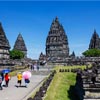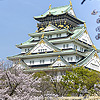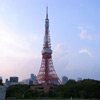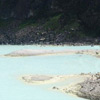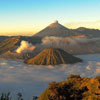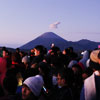
YOGYAKARTA balances life from the past and present with relative ease and is referred to as the soul of Java. Book your Yogyakarta and Prambanan Historical Fullday Tour to Us.
| Special Offer | Price Package | Historical Yogya | Fullday | Tour | ||
|---|---|---|---|---|---|---|
| Number of Guests | Min 02 Pax | 03 - 06 Pax | 07 - 10 Pax | 11 - 17 Pax | 18 - 30 Pax | 31 - 40 Pax |
| Price Per Person | IDR 1,687,500 | IDR 1,282,500 | IDR 1,147,500 | IDR 1,012,500 | …….. | …….. |
Terms & Conditions :
Itineraries :
YOGYAKARTA & PRAMBANAN HISTORICAL FULLDAY TOUR Upon arrival at Adi Sucipto Airport, meet and greet with your friendly guide. And then, direct tour to Borobudur Temple including visit Mendut & Pawon Temples. Afterward drive to Local Restaurant to have Indonesia Lunch and visit Batik Home Industry, Wayang Gallery also Silver Smith at Kota Gede. Before transfer to Airport, visit Prambanan Temple, then terminated to the airport for onward flight…..
Price Including :
Price Excluding :
History and Description of Your Destination :
YOGYAKARTA balances life from the past and present with relative ease and is referred to as the soul of Java.. Was the center of ancient Mataram Kingdom which was prosperous and high civilized. This kingdom built Borobudur Temple is the biggest Buddhist temple in the world, Prambanan Temple which the magnificent Hindu monument and Some other relics are Ratu Boko Palace and dozens of temples scattered throughout Yogyakarta.
Yogyakarta is a unique provincial government as it is the only province in Indonesia where the government is lead by the Sultan who is also the King of Yogyakarta Palace. The policy was resolved after the Yogyakarta monarchy installed its authority into the Indonesian Republic in 1945. In the era of the struggle for independence, the monarchy of Yogyakarta also gave financial support to the republic.
This province has 5 administration districts which are known as kabupaten : Bantul, Sleman, Yogyakarta, Kulonprogo and Gunung Kidul. Each kabupaten has a bupati (political leader), who is elected by citizens every 5 years…?
During the full moon in May or June, Buddhists in Indonesia observe Vesakannual ritual by walking from Mendut passing past Pawon and ends at Borobudur.[5]The ritual takes the form of mass Buddhist prayer and pradakshina(circumambulation) around the temple.For local Javanese, especially those who follow traditional Kejawen Javanese mysticism or Buddhism practices, praying in Mendut temple is believed to fulfill various wishes, such as deliverance from sickness.
Pawon literally means "kitchen" in Javanese language, which is derived from the root word awu or dust. The connection to the word "dust" also suggests that this temple was probably built as a tomb or mortuary temple for a king.[3] Pawon from the wordPer-awu-an (place that contains dust), a temple that houses the dust ofcremated king. However who was the personage that entombed here is still unknown. Local people name this temple as "Bajranalan" based on the name of the village. Bajranalan is derived from the sanskrit word Vajra (thunder or also a Buddhist ceremonial tool) and Anala (fire, flame).
The temple slightly faces northwest and stands on a square base. Each sides of the stairs and the top of the gates are adorned with carved Kala-Makara, commonly found in classic Javanese temples. The outer wall of Pawon is carved with reliefs of boddhisattvas and taras. There are also reliefs of kalpataru (tree of life), flanked between Kinnara-Kinnari. The square chamber inside is empty with a square basin in the center of it. Rectangular small windows were found, probably for ventilation. The roof section of is crowned with five small stupas and four small ratnas. Because of its relative simplicity, symmetry and harmony, the historians dubbed this small temple as "the jewel of Javanese temple architecture", in contrast with tall-slender East Javanese style counterparts as founds in later Kingdom of Singhasari and Majapahit period.
Borobudur, or Barabudur, is a 9th -century Mahayana Buddhist Temple in Magelang, Central Java, Indonesia. The monument consists of six square platforms topped by three circular platforms and is decorated with 2,672 relief panels and 504 Buddha statues. A main dome, located at the center of the top platform, is surrounded by 72 Buddha statues seated inside a perforated stupa. It is the world’s largest Buddhist temple, as well as one of the greatest Buddhist monuments in the world. Built in the 9th century during the reign of the Sailendra Dynasty, the temple was designed in Javanese Buddhist architecture, which blends the Indonesian indigenous cult of ancestor worship and the Buddhist concept of attaining Nirvana.
The temple also demonstrates the influences of Gupta art that reflects India's influence on the region, yet there are enough indigenous scenes and elements incorporated to make Borobudur uniquely Indonesian. The monument is both a shrine to the Lord Buddha and a place for Buddhist pilgrimage. The journey for pilgrims begins at the base of the monument and follows a path around the monument and ascends to the top through three levels symbolic of Buddhist cosmology: K?madh?tu (the world of desire), Rupadhatu (the world of forms) and Arupadhatu (the world of formlessness). The monument guides pilgrims through an extensive system of stairways and corridors with 1,460 narrative relief panels on the walls and the balustrades. Borobudur has the largest and most complete ensemble of Buddhist reliefs in the world.
Evidence suggests Borobudur was constructed in the 9th century and abandoned following the 14th-century decline of Hindu kingdoms in Java and the Javanese conversion to Islam. Worldwide knowledge of its existence was sparked in 1814 by Sir Thomas Stamford Raffles, then the British ruler of Java, who was advised of its location by native Indonesians. Borobudur has since been preserved through several restorations. The largest restoration project was undertaken between 1975 and 1982 by the Indonesian government and UNESCO, following which the monument was listed as a UNESCO World Heritage Site.
The present name of the temple, Prambanan, was derived from the name of Prambanan village where the temple stood, this name probably being the corrupted Javanesepronunciation of "Para Brahman" ("The Supreme Brahman"). It is also possible Prambanan comes from Javanese root “(e)mban” which means carries a duty, reflecting gods role in the world, or the villagers duty in relation to the temple. Comparable with parahyangan (western part of Java island), comes from the root hyang, means god, or (e)yang, means ancestor in Javanese.
The Temple is dedicated to the Trimurti, the expression of God as the Creator (Brahma), the Preserver (Vishnu) and the Destroyer (Shiva). The temple compound is located approximately 17 kilometres (11 mi) northeast of the city of Yogyakarta on the boundary between Central Java and Yogyakarta provinces.The temple compound, a UNESCO World Heritage Site, is the largest Hindu temple site in Indonesia, and one of the biggest in Southeast Asia. It is characterized by its tall and pointed architecture, typical of Hindu temple architecture, and by the towering 47-metre-high (154 ft) central building inside a large complex of individual temples. Prambanan attracts many visitors from across the world.
What you should bring :
Tips For Your Trip in Yogyakarta, Central Java :
Comfort and safety during travel are two very important things before deciding traveling to a place. Here are some tips that can help you survive during the journey to the destination:






















